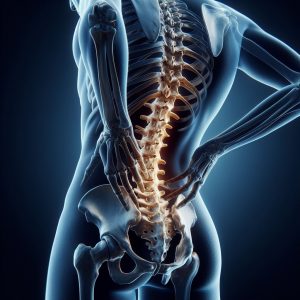A couple of weeks ago I worked with a close friend of mine who has been experiencing a bout of lower back pain. The lower back was not only painful, but it was starting to interfere with his work and his ability to earn a living.
This was not his first rodeo. He has seen me at various times in the past and he has been a close friend for about 25 years and is in his mid-fifties. Because of our friendship, I felt compelled to do something differently with him that smacked of “tough love”.
After getting an update on his situation, pain levels, provocative movements, interventions to date, etc., I handed him a blank piece of paper. On the piece of paper, I asked him to write all the proactive steps he is taking toward his overall health. Not his back, but his overall health.

He handed me back the piece of paper with what he wrote. I read his answers and placed his handwritten list back in his file. The list included:
• Walking 30-60 minutes, 3 to 4 times per week
• Intermittent fasting
• Jacuzzi 2-3 times per week
After we finished his session and he felt 95% better (thankfully), I pulled out his handwritten list and gave it back to him. He looked at me in bewilderment, wondering why I was returning his list. I looked him in the eyes and said, “you decide if this list is long enough”.
We both paused for a second. And I could see in his eyes, as he stood there without saying a word, that he got my point.
This is a guy who has been successful all his life in business and who has friends that would die for him. He has been happily married for 20 years and together they have raised a son that any parent would be proud of. But when it comes to his health, I would grade him a “C” student.
We all must decide if we are going to continue to put out fires or instead be proactive. And for anyone in their forties and above, much of what we are and will encounter is not an acute event. It is a product of cumulative degradation to our metabolic, cardiovascular, musculoskeletal, neurological and cognitive health.
I am now fifty-seven years old, and my week involves the following in some combinations. I do not do all of it every day, but I do all of it every week:
• Function First corrective exercises (6-7x/week)
• Heavy weight training (2x week)
• Functional full body resistance training (3x/week)
• Zone 2 cardio (2-3x/week)
• Sustained cardio 20-30 minutes at approximately 80-85% of my max heart rate (1-2x/week)
• Whole body vibration with Power Plate (4-5x/week)
• Full body mobility work with Core-Tex (6-7x/week)
• Foam rolling and/or percussion gun (4-6x/week)
• Cold plunge (1-2x/week)
• Cold shower 2-3 minutes (7x/week)
• Infrared light panel (7x/week)
• Intermittent fasting (7x/week)
• My version of Bulletproof coffee (7x/week)
• Meditation/theta state using BrainTap headset (7x/week)
• Daily gratitude
• Core-Tex Sit for hip and lumbar variability 2-3 hours per day (7x/week)
• Pescatarian, high fiber diet (7x/week)
• Heat and massage back wrap (Hyperice Venom) 2-3x/week
• Nutritional supplementation7x/week
• Early morning sunlight in my eyes within 30 minutes of waking (7x/week)
• Spend 40% of any television time prone and on my elbows to extend the spine (5-6x/week)
What do I strive for this year?
• Time in an infrared or traditional sauna (3-5x/week)
• Massage/body work (1-2x/month)
• Less mouth breathing, more nasal breathing (continuous)
• Improve body composition with reduced body fat by 3%
This is not a list to boast or make anyone feel overwhelmed. And you might also be asking, “where the hell does he find the time?”. In all honesty, much of it is built into my daily schedule and many of this list happens in blocked time, such as exercise, and others are done concurrently with other activities.
What I hope to communicate by sharing this is the opportunities that are available to all of us to seek out the most accessible levers we can pull that move our health-o-meter in the positive direction. When you come to see me with a chronic back, or neck or other issue, I know those who are proactive about their health will respond the fastest because you are stacking the deck in your favor.
At the end of the day, strategic exercise is still the most beneficial drug out there. Do it smart. Do it often. And appreciate how truly interdependent all the systems of our bodies are and what is going on under the hood is often not visible until we are in crisis mode.


